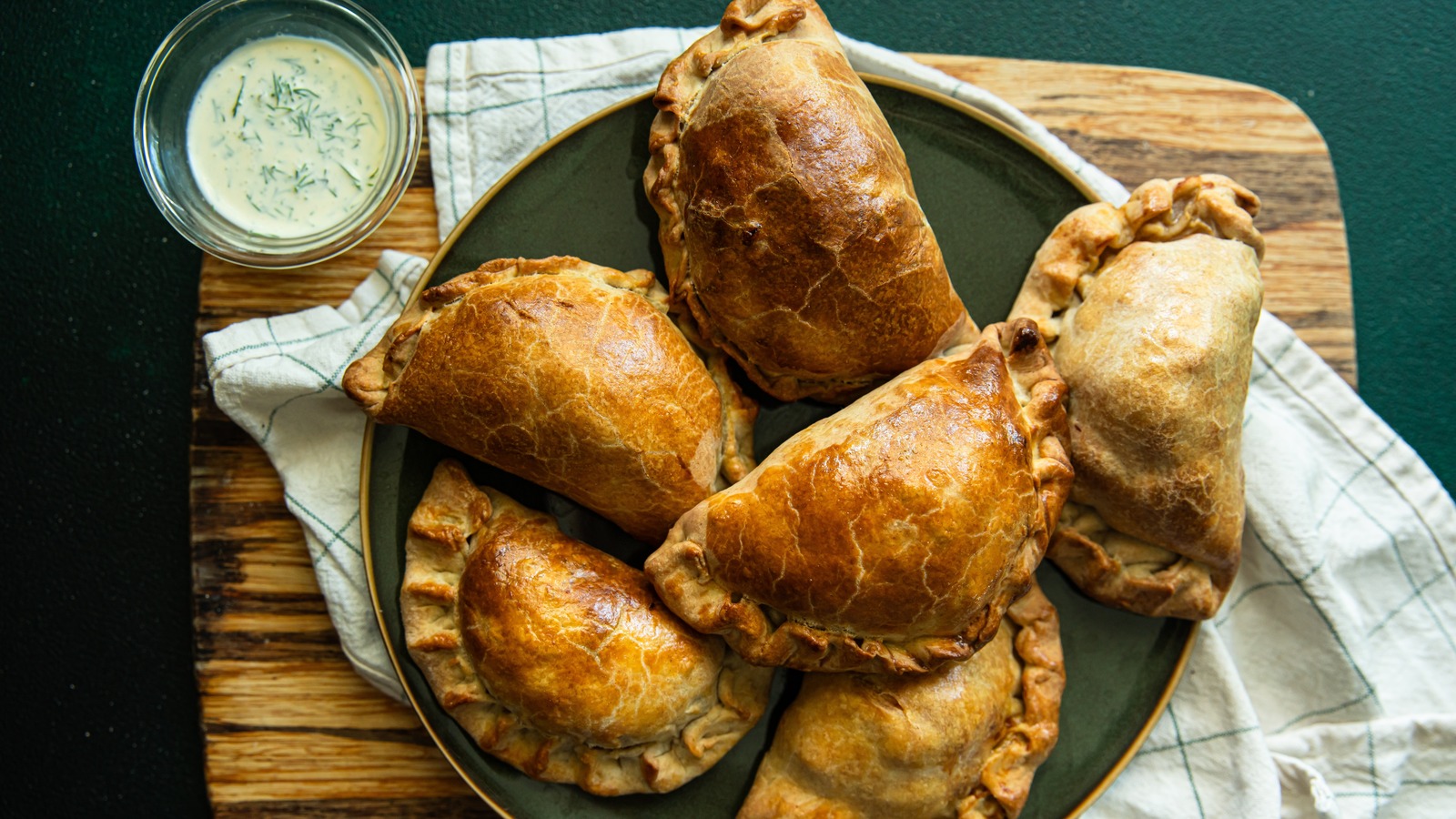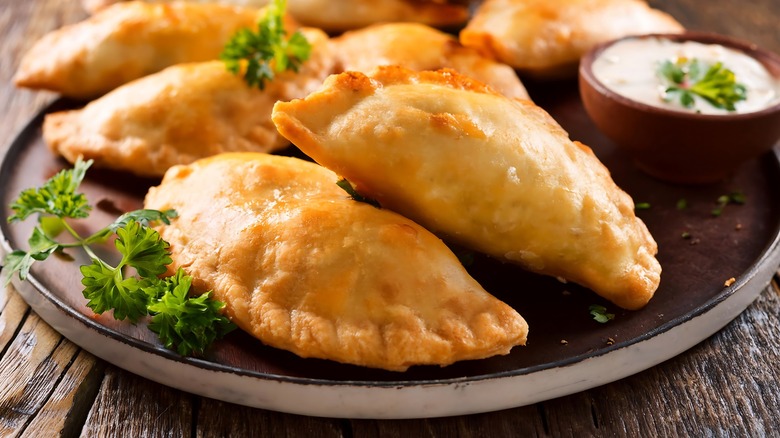Biting into a warm empanada is nothing short of immediate satisfaction for your tastebuds. These flaky dough pockets are crispy on the outside and soft on the inside, and they’re usually loaded with delicious fillings. But, if you’ve prepared them yourself only for them to end up soggy, there is one major empanada mistake you’re probably making: Not cooking and cooling the filling before adding it to the dough.
There are a few things that make up a perfect empanada, but the texture is a big one. If you fill an empanada with uncooked ingredients, the ingredients cook down while the dough pockets heat up, releasing moisture within the empanada and leaving you with a soggy result. The same thing will happen if you cook the filling but don’t let it cool first; the steam from the hot filling will turn to condensation if it’s trapped in the dough.
How to avoid soggy empanadas
Prior to filling the empanadas, cook whatever you plan to put inside them. The heat will cause some moisture to evaporate, and the filling won’t release much water as the dough cooks. After removing the filling from the heat, let it cool completely. This way, steam won’t become trapped inside the dough. Some types of filling release more moisture than others. If you’re making vegetable empanadas, don’t skip the pre-cooking step. Veggies consist mostly of water, so you want to make sure it doesn’t all end up in your dough.
There is another way to avoid soggy empanadas: Close them properly. Empanadas can be either baked or fried, but frying them in oil without a proper seal could allow the oil to seep into the pocket, leaving you with a soggy, oil-filled empanada. The braiding and crimping methods are the most common ones; if you’re unsure of how to braid the dough (which consists of pulling the dough out, then folding it over and in), you can crimp it tightly by pressing the edges with a fork.





